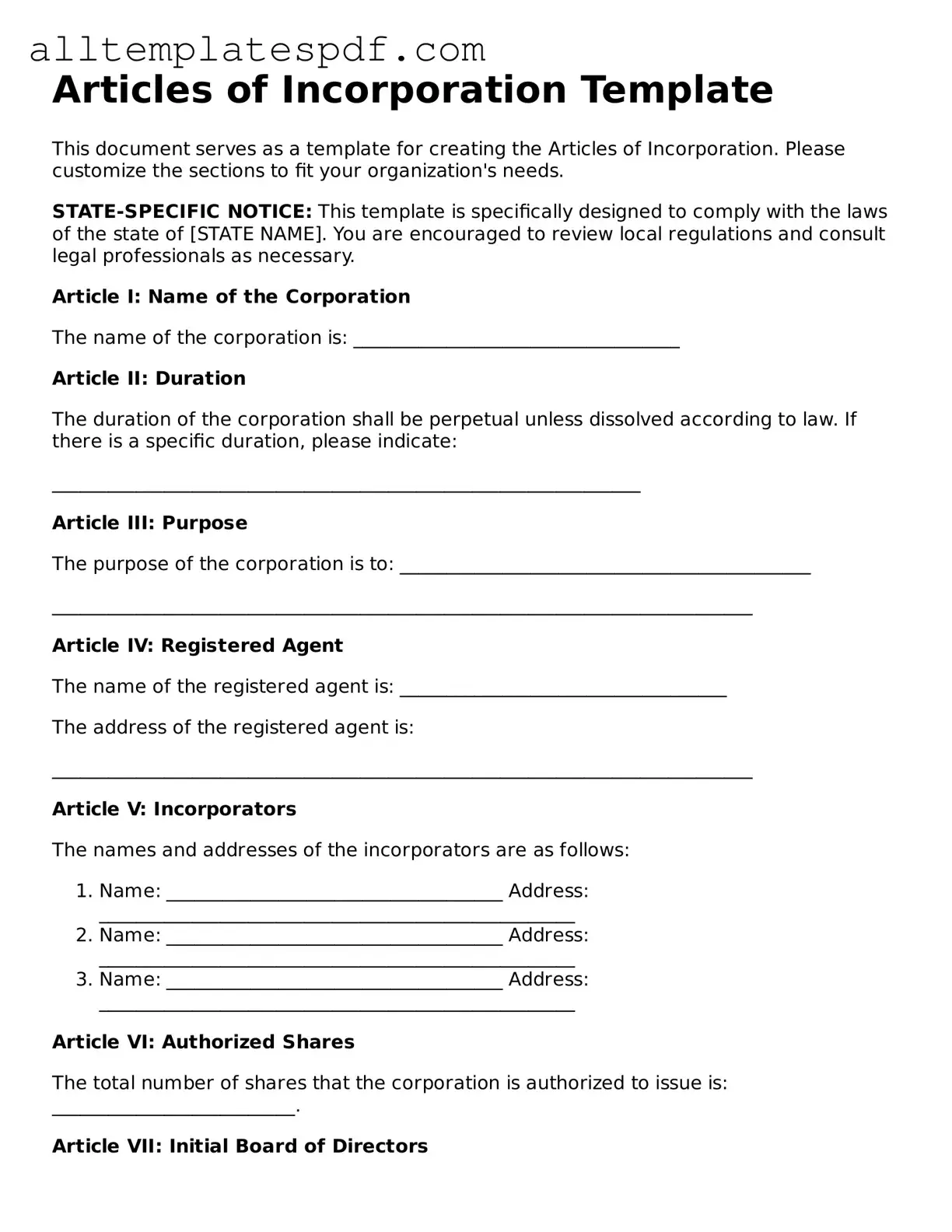Filling out the Articles of Incorporation form is a crucial step for anyone looking to start a business. However, many people stumble along the way. One common mistake is failing to choose the correct name for the corporation. The name must be unique and not too similar to existing businesses. If it’s not distinct, it could lead to rejection or legal issues later.
Another frequent error is neglecting to include the purpose of the corporation. This section isn’t just a formality; it defines what the business intends to do. A vague or overly broad description can cause confusion or may not meet state requirements.
People often forget to specify the number of shares the corporation is authorized to issue. This detail is essential because it outlines ownership and investment potential. Without this information, the form may be incomplete, leading to delays in processing.
Many individuals also overlook the importance of providing accurate information about the registered agent. This person or entity is responsible for receiving legal documents on behalf of the corporation. If the registered agent's details are incorrect, it can complicate legal matters down the line.
Another mistake is not paying attention to the incorporation fees. Each state has different fees, and failing to include the correct amount can result in rejection of the application. It’s vital to check the fee structure before submitting the form.
Some people rush through the process and fail to review the form for errors. Typos, incorrect dates, and missing signatures can all lead to complications. Taking the time to double-check everything can save a lot of headaches later.
Additionally, individuals sometimes forget to include the names and addresses of the initial directors. This information is crucial for establishing the governance of the corporation. Without it, the state may not process the application.
Failing to understand the state-specific requirements can also lead to mistakes. Each state has its own rules and regulations regarding incorporation. Ignoring these can result in an incomplete application or, worse, a rejected one.
Some applicants may also confuse the Articles of Incorporation with other documents, like bylaws. While they are related, they serve different purposes. The Articles of Incorporation establish the corporation, while bylaws govern its internal operations.
Finally, people often underestimate the importance of seeking legal advice. Navigating the incorporation process can be complex, and having a professional review the documents can help avoid costly mistakes. It’s better to invest in guidance now than to deal with problems later.
